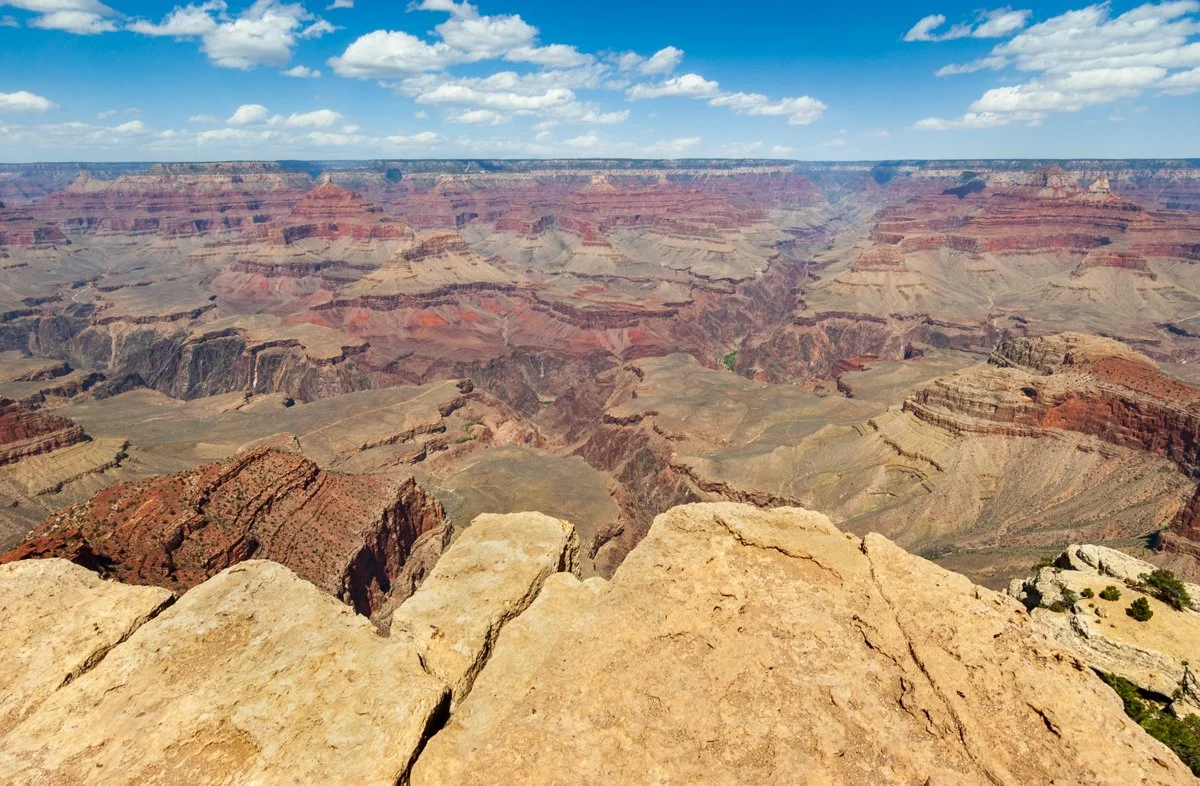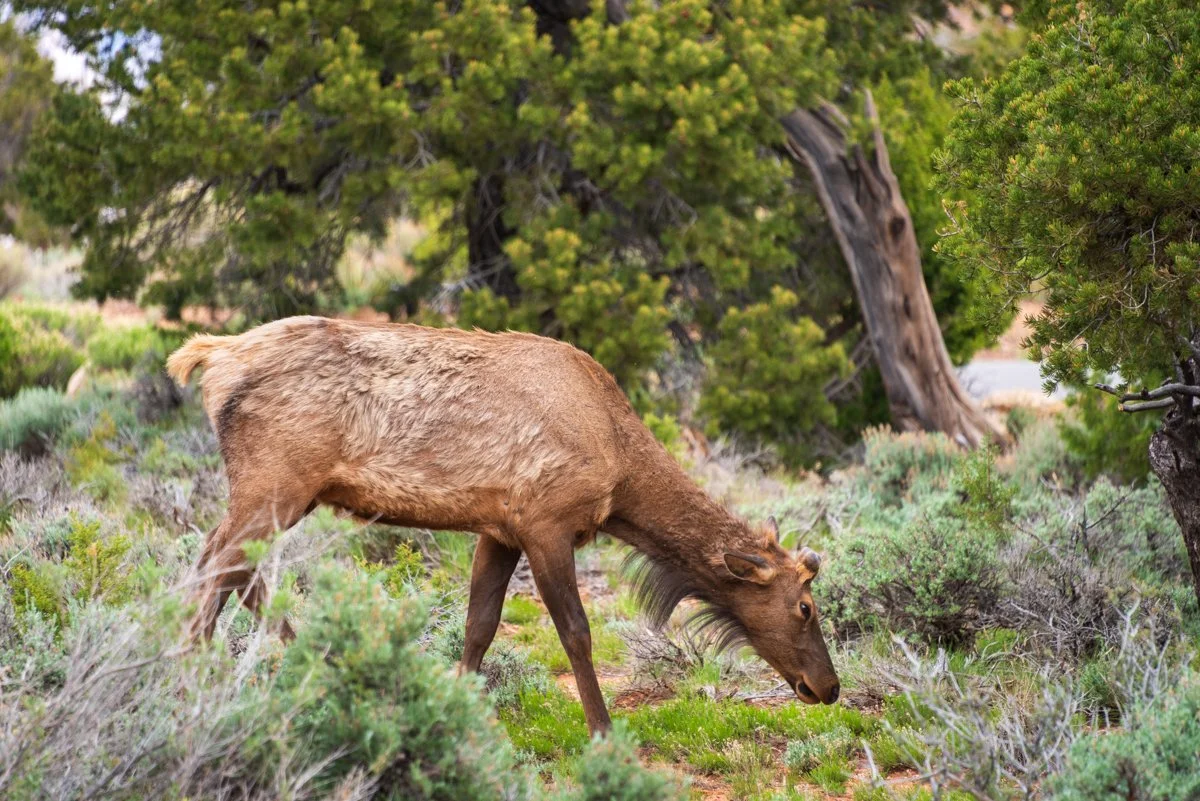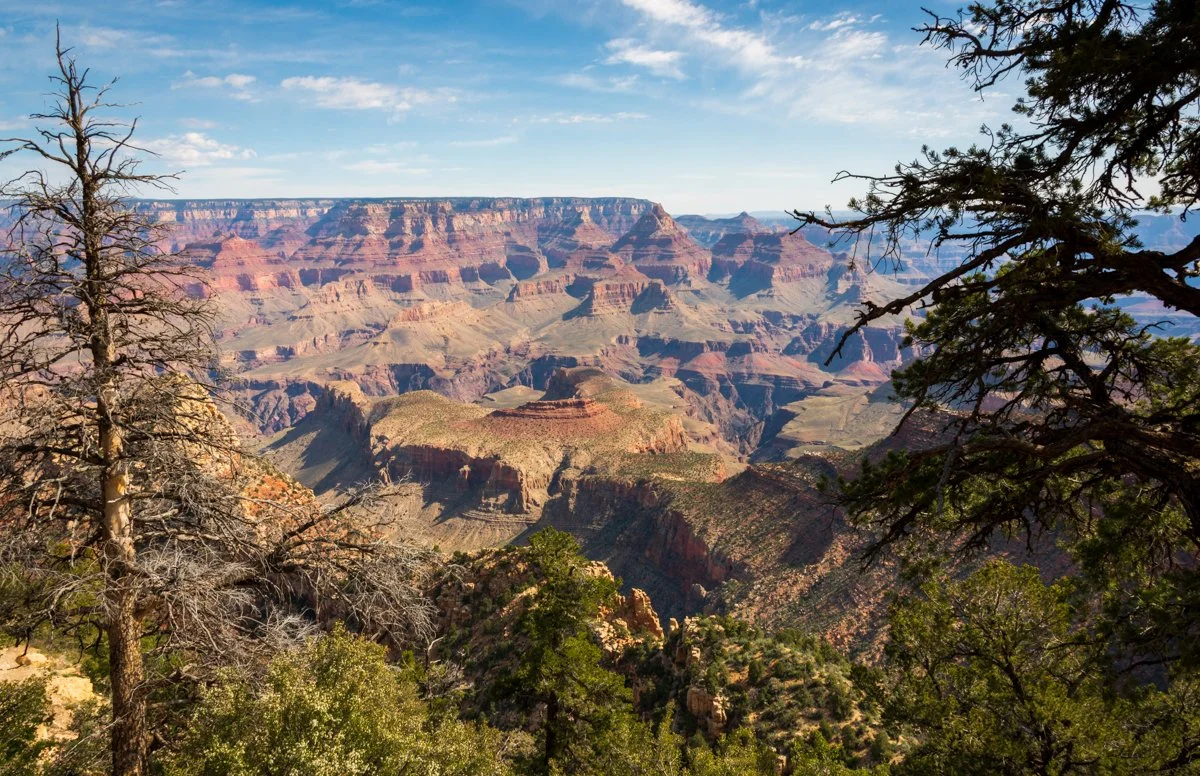Grand Canyon National Park (Arizona)
The central feature of the American Southwest, Grand Canyon National Park is a breathtaking testament to the raw power and beauty of nature. This awe-inspiring park, renowned for its vast expanse and kaleidoscope of colors, offers visitors a chance to delve into one of the world's most iconic and majestic landscapes.
Established as a national park in 1919, Grand Canyon National Park encompasses more than 1.2 million acres of diverse terrain, including vast stretches of desert, forested plateaus, and the mighty Colorado River, which has carved the canyon over millions of years. The park's namesake, the Grand Canyon, stretches for 277 miles and plunges to depths of over a mile, showcasing a stunning array of geological layers that tell the story of Earth's history.
Grand Canyon National Park is home to an incredible array of plant and animal life, which has adapted to thrive in the park's challenging environment. Iconic species such as California condors, bighorn sheep, and elk are among the park's most cherished residents, while the diverse habitats provide a refuge for countless other species, including numerous bird, reptile, and plant species.
Visitors to Grand Canyon National Park can partake in a wide range of recreational activities that showcase the park's unmatched beauty. The park offers numerous trails for hiking and backpacking, allowing guests to immerse themselves in the diverse landscapes that define the Grand Canyon. Rafting trips along the Colorado River provide a unique perspective on the canyon's depth and grandeur, while scenic drives, such as the Desert View Drive, offer breathtaking vistas and access to popular park destinations.
The nearby communities of Grand Canyon Village, Tusayan, and Williams serve as gateways to Grand Canyon National Park, offering a variety of accommodations, dining options, and local attractions. These bustling towns ensure that every visitor can experience the park's remarkable beauty in comfort and style.
MUST SEE SITES
South Rim: The South Rim of the Grand Canyon is the most popular and accessible area of the park, offering stunning views of the canyon and opportunities for hiking, biking, and wildlife viewing. Visitors can explore the area by taking a scenic drive, hiking one of the park's trails, or simply taking in the stunning views of the canyon.
Bright Angel Trail: This popular hiking trail descends into the canyon, offering stunning views of the surrounding landscape and unique rock formations. Visitors can explore the area by taking a guided hike, attending a ranger-led program, or simply taking in the stunning views of the canyon.
North Rim: The North Rim of the Grand Canyon is a less visited area of the park, featuring stunning views of the canyon and opportunities for hiking, camping, and wildlife viewing. Visitors can explore the area by taking a scenic drive, hiking one of the park's trails, or simply taking in the stunning views of the canyon.
Colorado River: This iconic river flows through the heart of the Grand Canyon, offering opportunities for rafting, kayaking, and scenic boat tours. Visitors can explore the area by taking a guided rafting trip or simply taking in the stunning views of the river and surrounding landscape.
Desert View Watchtower: This historic landmark is located on the eastern end of the South Rim and features stunning views of the canyon and surrounding landscape, as well as a variety of exhibits on the area's history and culture. Visitors can explore the watchtower, attend a ranger-led program, or simply take in the stunning views of the canyon.
GETTING THERE
The most popular ways to arrive at Grand Canyon National Park are by car and by air. If you're driving, the park is located in northern Arizona and can be accessed via several routes. From the south, you can take US Highway 180 to the park entrance. From the east or west, you can take Interstate 40 to US Highway 64, which leads to the park entrance.
If you prefer to travel by air, the closest airport to Grand Canyon National Park is the Flagstaff Pulliam Airport, which is located about 80 miles from the park. The airport offers flights from several cities, including Phoenix, Denver, and Los Angeles.
Once you arrive at Grand Canyon National Park, the best way to get around is by car or by shuttle bus. The park has a free shuttle bus system that operates on the South Rim, which is the most visited area of the park. There are also several hiking trails available for exploring the park's many ecosystems and wildlife, including the famous Bright Angel Trail that descends into the canyon.
GATEWAY COMMUNITIES
The towns of Tusayan, Grand Canyon Village, and Williams serve as the primary gateway communities to Grand Canyon National Park, offering various accommodations, dining options, souvenir shops, and outdoor recreation equipment rentals.
ACCOMMODATIONS
Visitors can find various lodging options in the surrounding communities, including hotels, motels, and vacation rentals. The park itself features several lodges and cabins, such as the El Tovar Hotel, Bright Angel Lodge, and Phantom Ranch. Additionally, campgrounds are available within the park, providing both tent and RV sites.
CAMPGROUNDS
Grand Canyon National Park has several campgrounds, including Mather Campground and Desert View Campground on the South Rim, and the North Rim Campground. These campgrounds offer tent and RV sites, as well as basic amenities like restrooms, drinking water, and picnic areas. Some campgrounds require reservations, while others are available on a first-come, first-served basis.
WEATHER/CLIMATE
Grand Canyon National Park has a semi-arid climate, with hot summers and cold winters. Average summer temperatures on the South Rim range from the 40s to 80s Fahrenheit, while winter temperatures can dip below freezing. The North Rim is cooler due to its higher elevation. Visitors should be prepared for potential rain, snow, and rapidly changing weather conditions.
RECREATION OPPORTUNITIES
Numerous recreational opportunities await visitors, including hiking, backpacking, wildlife viewing, and scenic drives. The park's most popular hike is the Bright Angel Trail, which descends into the canyon and offers stunning views of the park's geological formations. Other notable hikes include the South Kaibab Trail and the North Kaibab Trail. Wildlife viewing is also popular, with a variety of species, such as elk, mule deer, and California condors, inhabiting the area.
VISITOR CENTER
Grand Canyon National Park has several visitor centers, including the South Rim Visitor Center, Grand Canyon Village Visitor Center, and the North Rim Visitor Center. All provide information about the park's history, geology, wildlife, and recreational opportunities. Rangers are available to offer guidance and answer questions. The visitor centers are open daily, year-round, except for the North Rim Visitor Center, which is open seasonally due to winter closures.
THINGS TO KNOW
Entrance Fee: $35 per vehicle (7-day pass), $30 per motorcycle (7-day pass), $20 per person (7-day pass), or $70 for an annual park pass.
Pet Policy: Pets are allowed on a 6-foot leash in developed areas, on trails above the rim, and in campgrounds, but must be under control at all times. Pets are not allowed below the rim, on park shuttle buses, or inside park buildings.
Hours of operation: Grand Canyon National Park is open 24 hours a day, 7 days a week, year-round. Some roads, campgrounds, and facilities may be closed or have limited hours, depending on the season.
Website: https://www.nps.gov/grca/index.htm
Contact phone number: (928) 638-7888
Address: Grand Canyon National Park, P.O. Box 129, Grand Canyon, AZ 86023, United States





